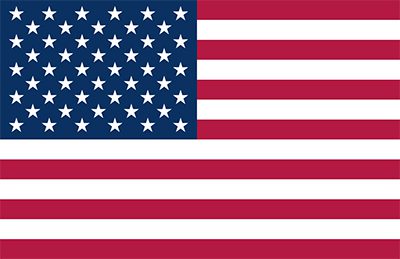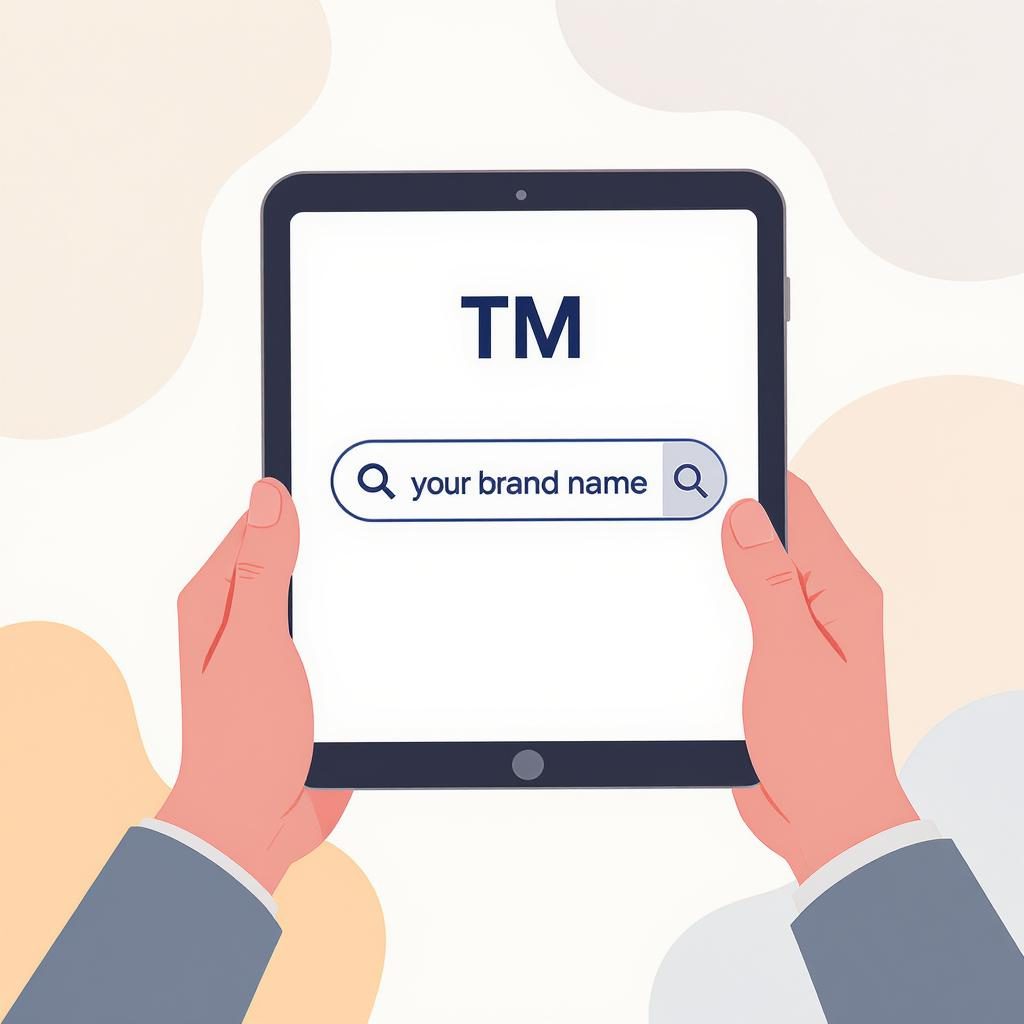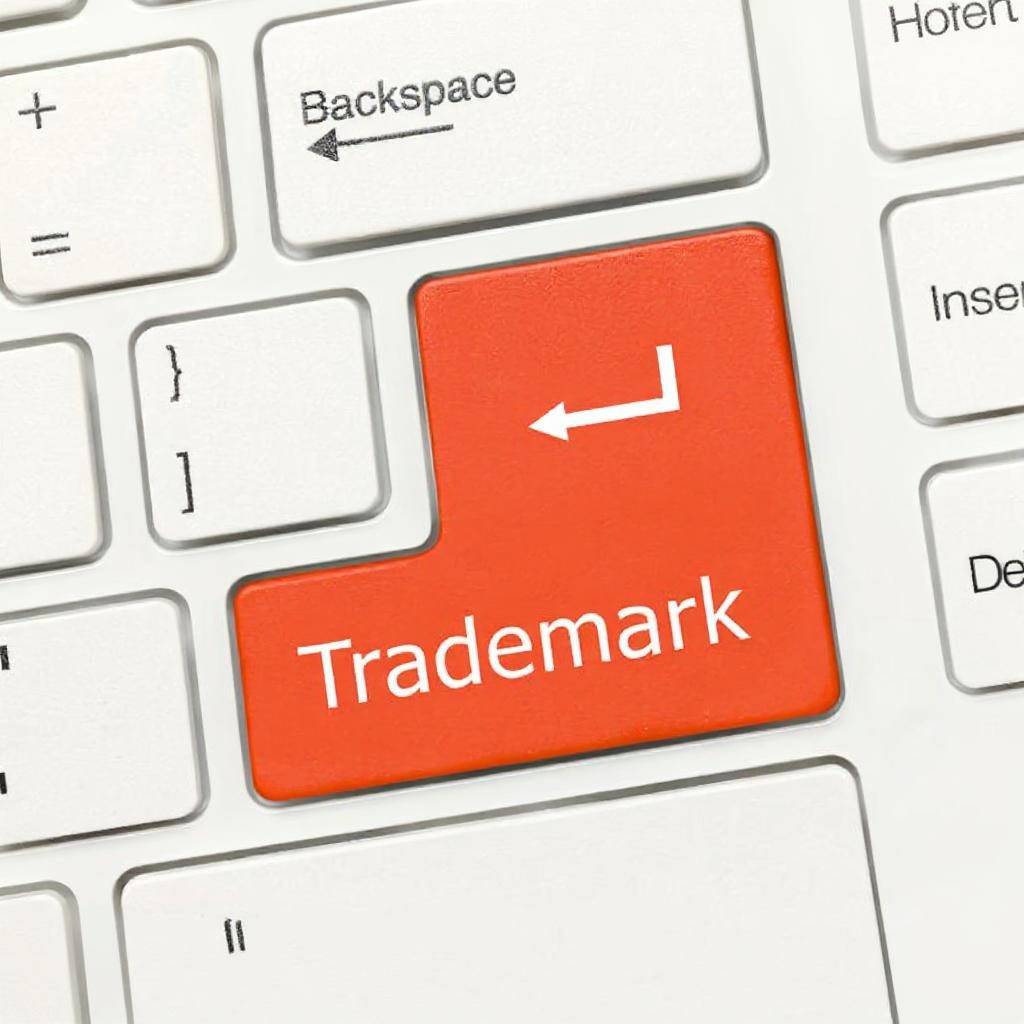
Brand Registration Guide in 2025
In the fast-evolving world of business and intellectual property, timing is everything. Whether you’re launching a startup, building an e-commerce empire, or growing a legacy


Navigating the trademark registration process in the U.S. can be overwhelming, with strict rules and detailed legal requirements. That’s why you need affordable trademark registration services backed by a knowledgeable team that gets it right the first time.At Trademark Focus, we specialize in guiding clients through every step of the process—quickly, accurately, and without unnecessary delays. Our goal is to provide reliable support while helping you secure your trademark at a reasonable cost. Protect your brand with confidence through our affordable trademark registration in the USA.
We have very knowledgeable and experienced US attorneys, who work with us on a contract basis. We will be able to handle all aspects of uspto trademark registration, except for opposition and litigation. If we are unable to help, we have a large network of capable attorneys and will gladly refer you to an attorney who will be able to help.
The prices are in USD$ for the US
Covers filing your application and reporting the progress all the way to registration. 2 classes included. This is our entry-level package.
Covers full trademark registration, including reporting and responding to non-substantive examiner’s objections and free re-filing.
Covers all aspects of trademark registration, including responding to all examiner’s objections and free re-filing. More free extras.
Our “ALL IN” package includes government fees, responses to examiner objections (office actions), opposition proceedings, free re-filing, and additional benefits.
If you receive an office action, we will notify you promptly and provide an estimate to respond based on our hourly rate. Whenever possible, we offer a flat fee option.
If your budget is limited and our free EU trademark search does not reveal any registration obstacles, you can proceed confidently with your application.
This package includes everything offered in our “SAIL THROUGH” package, plus a few valuable extras. It covers reporting and responding to non-substantive (procedural) office actions, filing a Statement of Use with specimens provided by the client when needed, and requesting any necessary extensions to file a Statement of Use. If your trademark is refused by the Trademarks Office, we also offer free re-filing under the same terms as our “SAIL THROUGH” package — meaning you’ll cover the government fees, while we’ll waive our professional fees. You can visit our FAQ section for full details about our re-filing process. This package includes up to 2 classes, and you can add additional classes for just $50 per extra class.
This package does not include government fees, responses to substantive office actions, opposition proceedings, or the additional free extras that come with our “BELLS AND WHISTLES” package.
This is our most popular option, providing peace of mind and budget predictability throughout the trademark process. It’s also an excellent choice if you’re filing for a brand new trademark that hasn’t been used yet.
This package offers advantages over the “SAIL THROUGH” package by including free handling of non-substantive office actions and the filing of a Statement of Use. Plus, if your trademark is refused, you’ll have the option to file for a different trademark with our professional fees waived—giving you greater flexibility and peace of mind throughout the registration process.
This package includes everything offered in our ‘ALL IN’ package, plus reporting and responding to all examiner’s objections. It also includes free re-filing if your trademark is refused. Re-filing will be handled under our ‘ALL IN’ package terms — you’ll be responsible for the government fees, while we’ll waive our professional service fees. For full details, please refer to our FAQ section.
The maximum number of classes: unlimited.
This package is recommended if our trademark search has identified potential obstacles to your registration or if you plan to file for multiple classes.
We handle all office actions at no additional cost. Furthermore, if your trademark is refused, you have the option to file a different trademark with our professional fees waived. This package offers complete peace of mind and budget predictability. Learn more about why this package is the best choice here.
If your trademark is refused,
We’ll file another – fee excused.
Trademark registration in the US
Starting January 18, 2025, the US government filing fee is US$350 per class when using the base application. This option allows you to select up to 15 items of goods or services per class from the pre-approved list provided by the USPTO.
If you prefer to use a custom description (free-form text) instead of the pre-approved list, the government fee increases to US$550 per class. Additionally, for free-form text exceeding 1,000 characters, an extra fee of US$200 will apply for each additional block of 1,000 characters.

Our professional fee to file a Statement of Use is US$250, plus US$50 for each additional class beyond two when you purchase our SAIL THROUGH package. However, if you select either our ALL IN or BELLS AND WHISTLES package, this service is included at no extra professional fee — giving you better value and added convenience.
Similarly, the professional fee to file an Extension of Time to file a Statement of Use is US$100 with the SAIL THROUGH package. Just like with the Statement of Use, this service is completely free of extra professional charges when you choose our ALL IN or BELLS AND WHISTLES packages.
A Power of Attorney (POA) is a legal document that grants permission for one person or entity to act on behalf of another in matters related to business, property, or personal affairs. The person granting this authority is known as the Principal, while the individual or organization receiving it is referred to as the Attorney or Agent.
In the context of trademark registration, a Power of Attorney is sometimes required to officially appoint a representative who can act for you before the relevant trademark office. In many countries like the United States, United Kingdom, Canada, Australia, and much of Europe, you typically don’t need to sign a separate POA for a regular trademark application — it’s understood when you engage an attorney or agent for your filing.
However, some countries, including China, Mexico, Russia, and India, do require a signed Power of Attorney from the trademark owner (or a legally authorized person) before an application can be submitted. Additionally, in the United States, if you want to replace your current attorney and assign a new one to handle your trademark application, you’ll need to sign a Power of Attorney to formally authorize the new representative.
Government filing fees for trademarks are charged per class. The more classes you include, the higher your filing and future maintenance fees. Filing in a single class keeps your trademark protection affordable while covering your core product or service.
When reviewing your application, the USPTO searches for potentially conflicting trademarks. The more classes you include, the higher the chance of your application running into conflicts. A single-class filing limits the scope of the search, reducing delays and increasing your chances of faster approval.
In the US, you must provide proof that your trademark is being used in commerce before registration and again during renewals. It’s much easier to prepare and submit proof of use for one product category than for several. This simplifies your paperwork, saves time, and reduces legal risk.
A broader application covering multiple classes increases the chances of objections or oppositions from other trademark owners. A single-class filing narrows your claim, making it less likely to attract challenges from unrelated industries.
US trademark law requires you to show ongoing use for every class in your registration. If you stop selling products or services in one class but keep it listed, you risk weakening your entire registration. A single-class trademark is easier to maintain, monitor, and renew over time.
As of August 2019, the United States Patent and Trademark Office (USPTO) requires all foreign applicants to be represented by a licensed US trademark attorney. What does this mean for you? If you or your business are based outside of the US, you must appoint a qualified US attorney to submit your trademark application.
If your application was filed before August 2019 and you’ve received any correspondence from the USPTO after that date — such as an Office Action or request for additional information — you’ll also need a US attorney to respond on your behalf.
Our service makes this easy by connecting you with an experienced US trademark attorney who will handle the filing and legal representation for your application.
Before moving forward with your US trademark filing, it’s important to know when applying might not be the best option. Here are some situations where holding off is recommended:
If you’re not actually using the trademark in commerce: The US requires proof that you’re actively selling products or services under your trademark before it can be registered. If you don’t have plans to use the trademark soon, it’s better not to file just yet.
If your trademark is too generic: Marks that are common words or descriptive terms without any unique elements aren’t eligible for registration. Consider adding distinctive wording or design features before applying.
If your slogan is purely informational: Phrases that merely convey a message, like “Once a Marine, Always a Marine” or “Black Lives Matter”, typically won’t be accepted as trademarks.
If you haven’t done a comprehensive trademark search: The US is one of the strictest places to register a trademark. Filing without checking for conflicting trademarks first is risky and could waste time and money.
If you’re aware of a conflicting mark: If a search reveals a similar or identical trademark, it’s wise to revise your mark before filing instead of risking a refusal.
If you haven’t finalized your product list: If you don’t have a clear plan for the exact goods or services you’ll be selling under your brand, it’s better to wait or consider registering in quicker jurisdictions like the UK, Germany, or the EU, especially if your goal is Amazon Brand Registry.
If your only purpose is Amazon Brand Registry: Fast-track applications in Germany, the UK, or the EU can be more affordable and faster alternatives for this specific need.
If budget is tight: US trademark applications can get costly with government fees charged per class and additional fees for filings like the Statement of Use. Filing in just one class or opting for a different country might be a smarter choice if funds are limited.
If you run a local-only business: Federal US trademarks are meant for businesses offering goods or services across state lines. If you’re a local restaurant, hair salon, or service provider with no interstate commerce, a State trademark application is likely a better fit.
You have three easy ways to get started with us:
Book an initial consultation call. Want to talk it over first? Schedule a phone call with one of our team members. You can find the link to our trademark packages right here.
Request a free preliminary trademark search. If you’re not sure whether your trademark is likely to be approved, we’ll run a quick check for you — at no charge. While it’s a basic search, we’ll let you know right away if your mark is clearly unregistrable. You can order your free search here.
Purchase a trademark package and get started immediately. If you’re ready to move ahead, you can pick your package, see our pricing, and place your order directly on our website.
What happens after you buy a trademark package?
Once your order is in, here’s what you can expect:
Order confirmation. We’ll send you a confirmation email to acknowledge your purchase.
Trademark registrability check. A thorough, professional trademark search will be carried out. If any potential problems show up, we’ll offer clear, detailed advice on how to improve your chances of getting your trademark registered.
Next steps based on search results:
If your trademark looks good, we’ll move ahead and file your application.
If it turns out your trademark has a low likelihood of approval, you’ll have three choices:
Request a full refund.
Pick a new name with our help. We’ll provide instructions and conduct additional searches for free until we land on a registrable option.
Move forward with the application as-is, understanding the possible risks.
The decision is completely yours. Ready to begin? Take your first step today!
Since August 3, 2019, the United States Patent and Trademark Office (USPTO) requires all foreign-domiciled applicants — meaning anyone based outside of the US — to appoint a licensed US trademark attorney for any filings and proceedings before the USPTO and the Trademark Trial and Appeal Board (TTAB).
We’ve got you covered. We work with a select network of trusted US trademark attorneys who handle filings on behalf of our international clients. Whether you’re starting a new application or already filed on your own, we can take over your case and assign a US attorney to represent you — and we do this at no extra cost.
Unlike many other firms that raised their prices after this rule change, we kept our fees consistent. In every country where we offer trademark services, we ensure your application is submitted by a qualified local attorney or trademark agent, so you’ll always receive proper legal representation.
When filing a trademark application, it’s essential to specify the exact goods and services your trademark will cover. These are organized into different categories called trademark classes.
Classes 1 to 34 cover products — physical items you can touch.
Classes 35 to 45 cover services — intangible offerings.
Here’s a general overview of the categories to give you an idea (please note: this is a simplified guide for reference only and shouldn’t be used for official filings):
Class 1: Chemicals for industry, agriculture, and science
Class 2: Paints, varnishes, colorants, food colorants
Class 3: Cosmetics, soaps, shampoos, essential oils, perfumes
Class 4: Fuels, industrial oils, candles
Class 5: Pharmaceuticals, vitamins, supplements, disinfectants
Class 6: Common metals, metal containers, locks, safes
Class 7: Machines, motors (except for land vehicles)
Class 8: Hand tools, cutlery, razors
Class 9: Electronics, software, downloadable content, smartphones
Class 10: Medical instruments, dental tools, sex toys
Class 11: Lighting, heating, and kitchen appliances
Class 12: Vehicles (land, air, sea), vehicle engines
Class 13: Firearms, fireworks, ammunition
Class 14: Jewelry, watches, precious metals
Class 15: Musical instruments
Class 16: Paper goods, stationery, stickers, printed items
Class 17: Rubber, plastic products, insulation materials
Class 18: Leather goods, bags, wallets, pet accessories
Class 19: Non-metal building materials, monuments
Class 20: Furniture, mirrors, plastic storage, decorations
Class 21: Kitchen utensils, crockery, toothbrushes
Class 22: Ropes, tents, sacks, textiles in raw form
Class 23: Yarns, threads
Class 24: Textiles, fabrics, bed linen, towels
Class 25: Clothing, footwear, hats
Class 26: Sewing supplies, hair accessories, artificial flowers
Class 27: Carpets, rugs, floor coverings
Class 28: Toys, games, sports equipment, holiday decorations
Class 29: Processed foods, dairy, eggs, edible oils, jams
Class 30: Staple foods like bread, pastries, coffee, spices
Class 31: Fresh produce, live animals, pet food, plants
Class 32: Non-alcoholic drinks, fruit juices, beer
Class 33: Alcoholic drinks (except beer)
Class 34: Tobacco, e-cigarettes, matches
Class 35: Retail, advertising, business consulting
Class 36: Insurance, banking, real estate services
Class 37: Building construction, repair, installation services
Class 38: Telecom, internet broadcasting, communication services
Class 39: Transport, delivery, logistics, travel services
Class 40: Custom manufacturing, recycling, material treatment
Class 41: Education, publishing, entertainment, event organizing
Class 42: IT services, software development, SaaS, graphic design
Class 43: Hospitality, restaurants, cafes, catering
Class 44: Medical, dental, veterinary, beauty care services
Class 45: Legal, security, and personal services
Before filing, it’s smart to conduct a search for existing trademarks similar to yours. This helps avoid costly issues later — like rebranding products or packaging. At Trademark Angel, we offer a free initial search to assess the registrability of your mark.
If your search is clear, we’ll gather details to draft your application:
Trademark owner’s name
Whether it’s a word mark or logo
List of goods/services and their classes
Whether you’re filing under “Actual Use” (already selling) or “Intent to Use” (planning to sell)
Actual Use: You’ll need to submit a specimen (unedited photo) showing your mark on your product or service materials, plus your first sale date.
Intent to Use: You’ll file a Statement of Use later, once you start using the mark in commerce.
USPTO Fee: $350 per class (not included in our packages)
We file your application with the USPTO, and you’ll get an application serial number to track your status.
⚠️ Important: No changes can be made to your mark or goods after filing.
About 3–4 months later, a USPTO attorney examines your application.
If there are issues (like conflicting marks or unclear descriptions), an Office Action will be issued. You must respond within 6 months.
If approved, your mark is published in the Official Gazette for a 30-day opposition period.
Rarely, someone may oppose your mark. If so, we can connect you with a specialist.
If no opposition is filed (or after resolving one), Intent to Use applications receive a Notice of Allowance.
Within 6 months, you must file a Statement of Use and specimens showing the mark on your products/services.
Fee: $150 per class
Extensions available ($125 per class) if you’re not ready within 6 months — up to 5 extensions.
✅ If no opposition and (if needed) Statement of Use is filed and accepted:
Actual Use applications get a registration certificate 6–8 weeks after publication.
Intent to Use applications get a registration 4–8 weeks after Statement of Use acceptance.
🕑 Timeline: 8 months (best case) to 2+ years (if delays)
To keep your trademark active:
Between Year 5–6: File Section 8 Declaration ($325 per class)
Optional: File Section 15 Declaration ($250 per class) for incontestability
Between Year 9–10: File Section 9 Renewal ($325 per class)
✅ Keep using your trademark correctly to maintain protection.
This is the legal name of your business entity.
It’s registered with your state, provincial, or national government.
It appears on legal documents like incorporation papers, tax filings, and contracts.
Example:Microsoft Corporation
Important:
One company can own several brands and operate under multiple names.
This is the name you use in the marketplace to sell your products or services.
It may or may not be the same as your company name.
If it’s different, you typically need to register it as a “Doing Business As” (DBA) or “Trade Name.”
This is your address on the internet — the web address people type to visit your website.
It doesn’t give you trademark rights by itself, but it’s a valuable part of your brand identity.
Example:www.microsoft.comwww.skype.com
A single company can own multiple domain names for different brands, campaigns, or products.
A trademark is a legally protected brand identifier.
It can be a word, phrase, logo, symbol, sound, color, or even a scent that distinguishes your product or service from others in the market.
Registered trademarks give you exclusive rights to use that mark in connection with specific goods or services.
Example:MICROSOFT ![]()
The Windows logo ![]()
The Skype icon ![]()
Incorporating your business or registering a company name does not automatically give you trademark rights to use that name as your brand.
For example, in the US, each state has its own rules for business name registration. If you register an LLC named Coolapples LLC in Delaware, that registration only applies in Delaware. Another business could register Coolapples LLC in Indiana or any other state without infringing on your state-level business name.
This means your state-level company name registration does not protect your brand nationwide.
If you want exclusive, nationwide rights to your brand name—especially if you plan to expand beyond one state—you should register a federal trademark with the United States Patent and Trademark Office (USPTO). This trademark gives you the exclusive legal right to use your brand name for your goods or services across the entire country.
Similarly, if you’re in Canada or Australia, registering a trademark with the respective national trademark office will give you country-wide protection and make it easier to sell, license, or enforce your rights to your brand.
No, use of the trademark in commerce is not required before filing your application if you file based on an “Intent to Use” basis. This means you can file your trademark application before you actually start using it in the marketplace. However, you must eventually put the trademark to use and submit a Statement of Use along with evidence (called specimens) showing actual use before the trademark can be registered.
Foreign applicants may also file based on a foreign registration as their basis without prior US use.
Yes, use is mandatory after registration. You must continue using the trademark in commerce to maintain your rights. The USPTO requires you to file an Affidavit of Use (also called a Section 8 Declaration) between the 5th and 6th year after registration to prove your trademark is still in use. If you fail to file this affidavit, your trademark registration will be automatically cancelled.
Additionally, if someone proves your trademark is no longer in use, they can file a petition to cancel your registration.
Yes, you can legally use a trademark even if it isn’t registered. In fact, in many countries like the US, trademark rights are based primarily on actual use in commerce, not just registration. This is called common law trademark rights and gives you some protection within the geographic area where you use your mark.
However, there are important risks:
If someone else has already been using a similar or identical mark before you (whether registered or not), you may be infringing on their rights and could face legal action.
Without registration, your rights are limited and harder to enforce nationwide or internationally.
Registration provides stronger legal protection, public notice, and easier enforcement.
United States: 30 days from publication
Brazil: 60 days from publication
Canada, Australia, New Zealand: 2 months from publication
South Korea: 2 months from publication
United Kingdom: 2 months (can extend to 3 months on request)
Japan: 2 months from publication (trademark published twice: after filing and after registration)
Germany: 3 months from publication (publication occurs after registration)
European Union: 3 months from publication
China: 3 months from publication
India: 4 months from publication
However, there are important risks:
If someone else has already been using a similar or identical mark before you (whether registered or not), you may be infringing on their rights and could face legal action.
Without registration, your rights are limited and harder to enforce nationwide or internationally.
Registration provides stronger legal protection, public notice, and easier enforcement.
Trademarks may be filed at the state or federal level. State trademarks protect your mark in a specific state while federal trademarks protect your mark in all the states. State trademarks generally provide less legal protection than federal trademarks. Businesses operating in only one state should trademark in that state. Businesses operating in interstate commerce may file for a federal trademark. For example, if you operate a restaurant or a hair-dressing salon in Florida, you are not eligible for a federal trademark. In this case, you should apply for a trademark in the state of Florida. However, if you have two or more restaurant locations in more than one state, in our case, one in Florida and one in Georgia, you are eligible for a federal trademark. A business intending on expanding nationally or internationally should conduct a trademark search and file a federal trademark as soon as possible.
Trademarks can last indefinitely — as long as they are properly maintained and renewed on time. The key requirement is continued use of the trademark in connection with the goods or services for which it was registered.
Here’s how it works in different countries:
United States:
A trademark must be renewed every 10 years from the registration date. Additionally, between the 5th and 6th year after registration, you must file a Declaration of Use (affidavit of use) to keep the registration active.
European Union, Germany, United Kingdom, India, and Australia:
Trademarks must be renewed every 10 years, with the 10-year term starting from the application date.
China:
Renewal is required every 10 years, counted from the registration date.
Canada:
Trademarks must be renewed every 10 years, counted from the registration date. (Note: this was changed from a 15-year term to 10 years in June 2019.)
| Rank | Country | Average Time to Register | Notes |
|---|---|---|---|
| 1️⃣ | Germany | 1–3 months | Fastest. Can register within 1 month with accelerated examination. Occasionally unpredictable. |
| 2️⃣ | United Kingdom | 3.5–4 months | Consistent and low government fees. |
| 3️⃣ | European Union (EU) | 3.5–7 months | 3.5–4 months via “fast-track”; regular filings take 6–7 months. Higher government fees. |
| 4️⃣ | Mexico | 4–8 months | Can fluctuate; some applications take longer. |
| 5️⃣ | Australia | 7.5–12 months | Most trademarks register within a year if no objections. |
| 6️⃣ | China | 9–12 months | Appeals can delay by 8+ months. Improving timelines. |
| 7️⃣ | India | 10–12 months | Similar to China in average timelines. |
| 8️⃣ | United States | 12–14+ months | Often delayed by office actions. Can exceed a year easily. |
| 9️⃣ | Japan | 10–14 months | Fairly steady timeline. |
| 🔟 | Brazil | 12–18 months | Among the slower countries for registration. |
| 1️⃣1️⃣ | Canada | 36–42 months | Slowest. Pandemic delays made it worse. Expected to improve post-Madrid Protocol membership. |
A specimen of use is real-world proof showing how your trademark is actually used in connection with the goods or services you provide in the marketplace. It’s a requirement when filing certain types of U.S. trademark applications and during post-registration maintenance.
You must show your trademark directly on the product or its packaging. Acceptable specimens include:
Product labels
Tags attached to the product
Product packaging
Instruction manuals
Photographs showing the product with the mark visible
Not allowed: Drawings, mockups, or promotional ads alone — they don’t count for goods.
You need to prove your mark is publicly used when offering your services. Acceptable specimens include:
A screenshot of your website showing the trademark prominently (usually in the header) along with a description of your services.
Brochures, flyers, or online ads offering the services with your mark clearly visible.
Business cards or signage photos displaying your trademark alongside the services provided.
Submitting the correct type of specimen is crucial — the USPTO can refuse your application if the specimen doesn’t meet their requirements. It must reflect how your trademark appears in actual, day-to-day commercial use.

In the fast-evolving world of business and intellectual property, timing is everything. Whether you’re launching a startup, building an e-commerce empire, or growing a legacy

In today’s competitive business environment, protecting your brand identity is not just a legal necessity—it’s a strategic move that can have long-lasting impacts on your

In today’s fast-paced and highly competitive business world, building a brand that stands out is no easy task. From your logo and business name to
Trademark Focus is a trusted trademark registration firm with more than 10 years of expertise. We specialize in handling trademark applications and protection services across Canada, the US, and internationally.
No.518, Jianshe Avenue, Jianghan District, Wuhan, Hubei Province